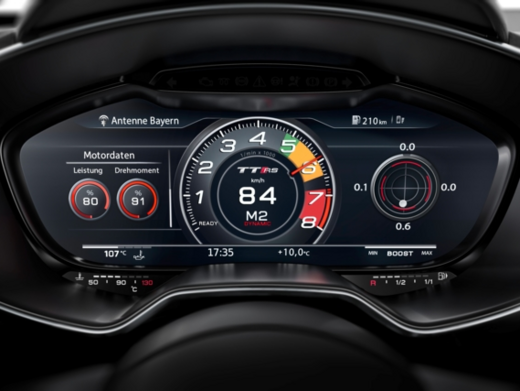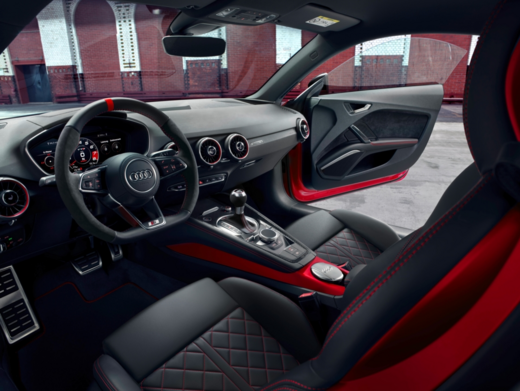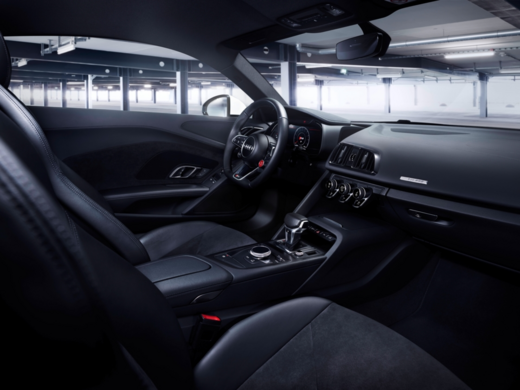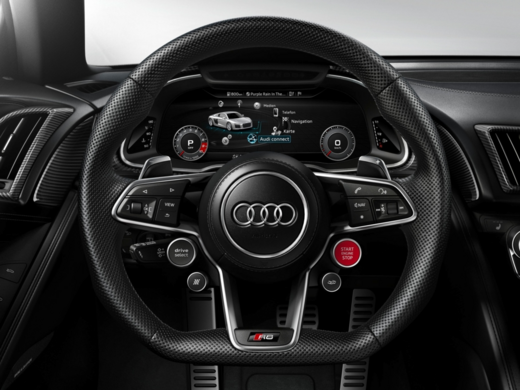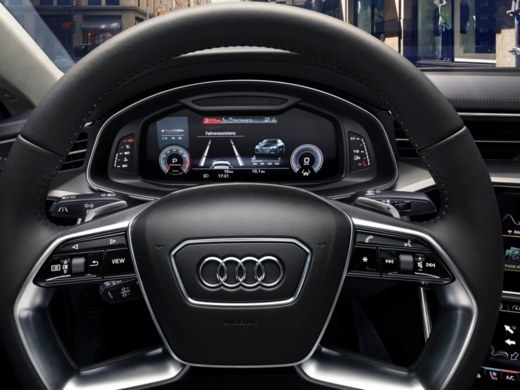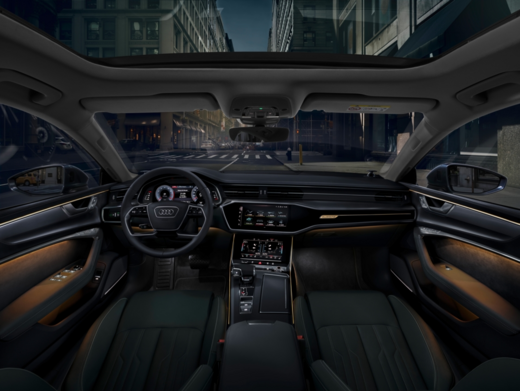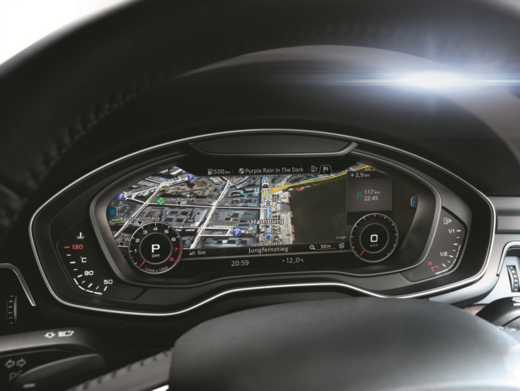In 2014, the launch of the new Audi TT model revolutionized the cluster instrument. The key feature was the development of a fully digital cluster instrument from e.solutions.
In place of an analogue cluster instrument with a small display for the on-board computer, a large display – the fully digital cluster instrument – is now sited behind the steering wheel. This gives the customer the opportunity to view additional information from the infotainment and navigation system in the immediate field of vision, as well as traffic-related displays, without losing sight of what is happening on the road. To this end, e.solutions has been implementing the user interface since the concept was first developed at Audi in 2011. We have developed all the functional software components required to visualize the driving data and to display and operate the system.
The cluster instrument is available in two models: the MMI Combi (Multi-Media Interface Combi Cluster Instrument) and the so-called FPK (Freely Programmable Cluster Instrument).
In the MMI Combi, the main infotainment unit and cluster instrument share a single display. The first vehicle to be equipped with this was the Audi TT, model year 2014. Because the contents are only displayed on the instrument behind the steering wheel, this is a driver-centric model. The TT was followed by other sports cars featuring the MMI Combi, such as the TTS and the R8.
The FPK was given its name because some displays and layouts are configurable, depending on the vehicle model. In addition to the cluster instrument display, the FPK models have at least one more display mounted in the center console – which makes the difference to the MMI. The infotainment content can be selected and operated by both driver and front passenger – it can be displayed on both screens and synchronized as required. Some vehicles also have additional displays for such things as climate control. The FPK was first used in the Audi Q7, model year 2015.
Performance
One highlight is its performance: it takes just 400-600 milliseconds to load all graphics and launch the user interface. Start-up from “power on” to readiness to drive takes less than two seconds. 60 images per second gives us extremely efficient rendering for all platforms, which is just as impressive as the wide range of layout and configuration options.
Design
A further highlight for our customers is the ability to change and customize the digital display. Thanks to the components and tools we use, design changes can be implemented quickly and efficiently. This means that high-volume production vehicles, such as the A4, or exclusive low-volume vehicles like the Lamborghini Urus, can all be individually designed. The fully digital cluster instrument enables the user to effortlessly switch between themed “skins”. The display can also be modified as desired to suit the driving situation.
